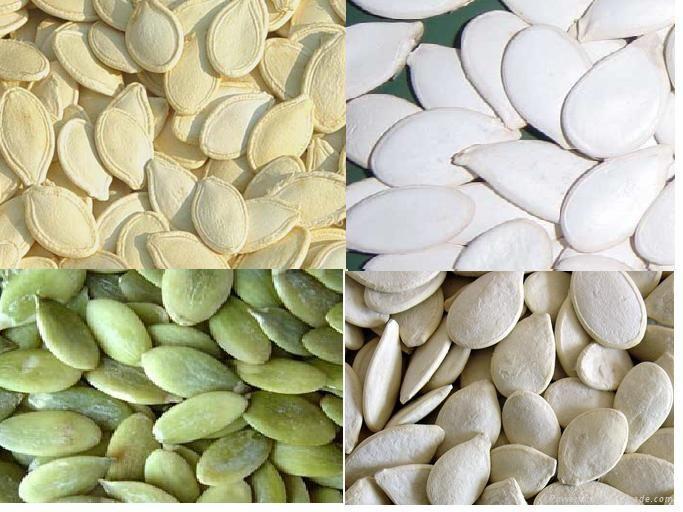Pumpkin seed
 Pumpkin is of New World origin, and was widely distributed over central and northern Mexico and the south-west USA. Archaeological remains, dated about 8750 BC, have been found in Mexico. It was an integral part of the corn (maize) – bean – squash complex, the main diet of several pre-Columbian civilization. In the sixteenth century it was taken to Europe, and later to the Middle East, Africa, and the Far East.
Pumpkin is of New World origin, and was widely distributed over central and northern Mexico and the south-west USA. Archaeological remains, dated about 8750 BC, have been found in Mexico. It was an integral part of the corn (maize) – bean – squash complex, the main diet of several pre-Columbian civilization. In the sixteenth century it was taken to Europe, and later to the Middle East, Africa, and the Far East.
The plant has a creeping stem or it may be bushy. Its leaves and stems are bristly and the leaves have a heart-shaped base. The yellow flowers are unisexual. Pumpkin fruits can be large (8-12 kg in weight) or small (2.5-3 kg). The cream, yellow, or orange fruit flesh is used in pies: the fruits are associated with Hallowe’en.
Its seeds are frequently sold in health food outlets. These are bottle shaped, markedly ridged, cream in color, and up to 2.5 cm (1 in) in length. However, in the early 1970s, in the USA, varieties (cultivars) were developed with naked seeds, i.e., without seed coats, although the thin inner part of the seed coat does remain. These naked seeds, frequently found in health food stores, are not markedly ridged and are often green in color, due presumably to chlorophyll in the remaining inner part of the seed coat.
The seeds are eaten like nuts, raw or roasted, or fried in deep fat and salted to give “pepitos”. In some parts of Central America the roasted kernels are combined with a sticky syrup to form “pepitorio”, a sweet confection. The kernels are included in bakery products (e.g. bread, pies), breakfast cereals, and salads.
Oil is present in the seed to the extent of 40-50%. It contains 80% unsaturated fatty acids, of which 60% is linoleic acid. The oil is sometimes extracted (it is important in Austria) and used in salad dressing, sauces, and even cakes. It should not be used in frying because of its low burning point.
The seed contains 30-40% protein, and a range of minerals such as calcium, phosphorus (quite a lot), iron, magnesium, zinc, and others. Vitamins present include vitamin E, vitamin K, vitamin B, and other water-soluble types. Some analyses report vitamin A – this presumably relates to the carotenes present. There is about 2% fiber and 15% carbohydrate, giving, with other seed constituents, about 550 keal per 100g.
From what has been stated above, pumpkin seed would appear to be non-toxic and a good source of a range of nutrients. It has been used for centuries in Latin America, Africa, and India in traditional medicine to immobilize and expel intestinal worms and parasites. The active ingredient appears to be “cucurbitin” (0.18-0.66% in the seed). Pumpkin seed has also been suggested as a soothing treatment for prostate and bladder problems.
While pumpkin seeds might be effective in dealing with intestinal worms and parasites, it is now generally replaced by more modern treatments.
As regards its use for urinary problems, it would be very advisable to seek medical advice before employing pumpkin.

